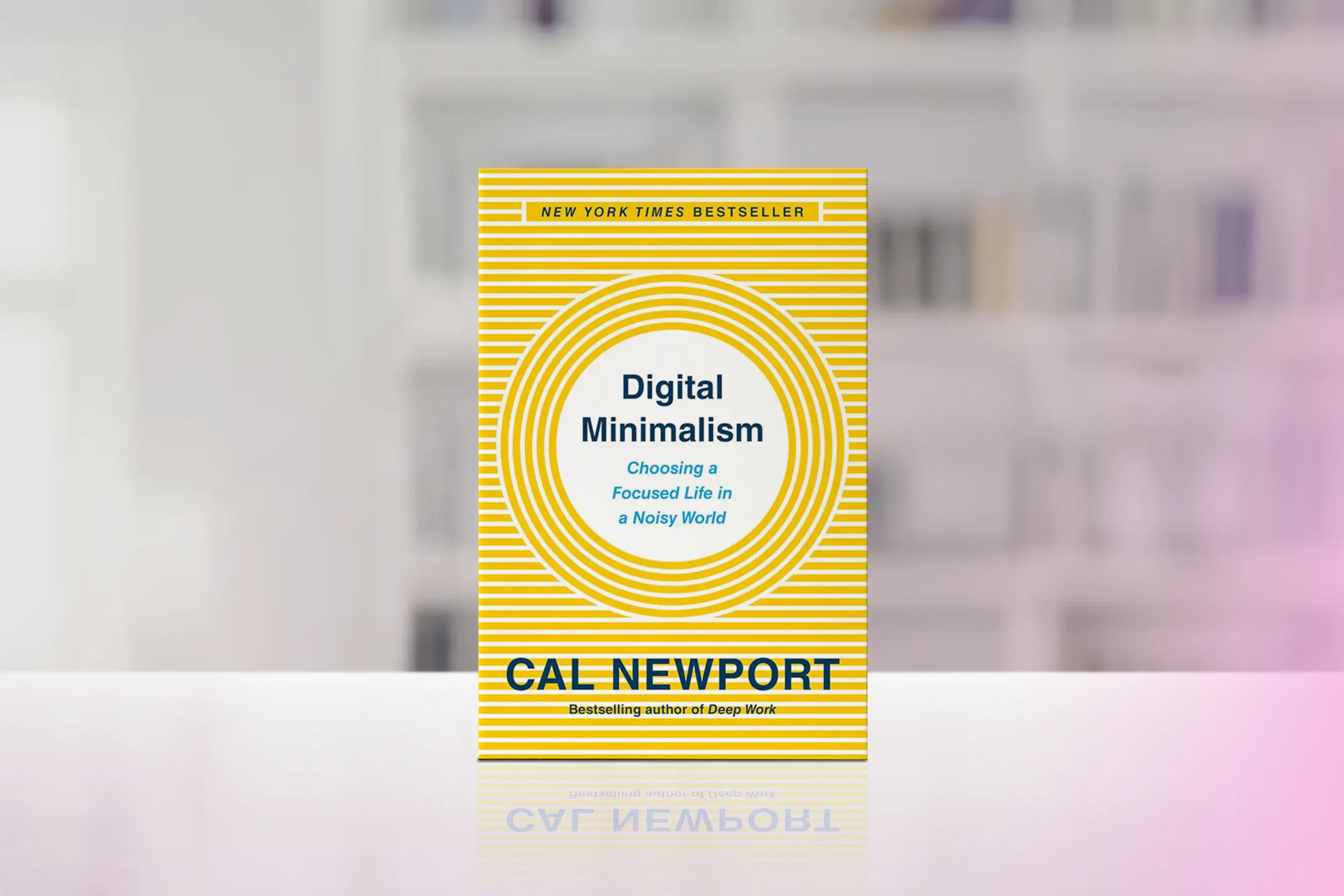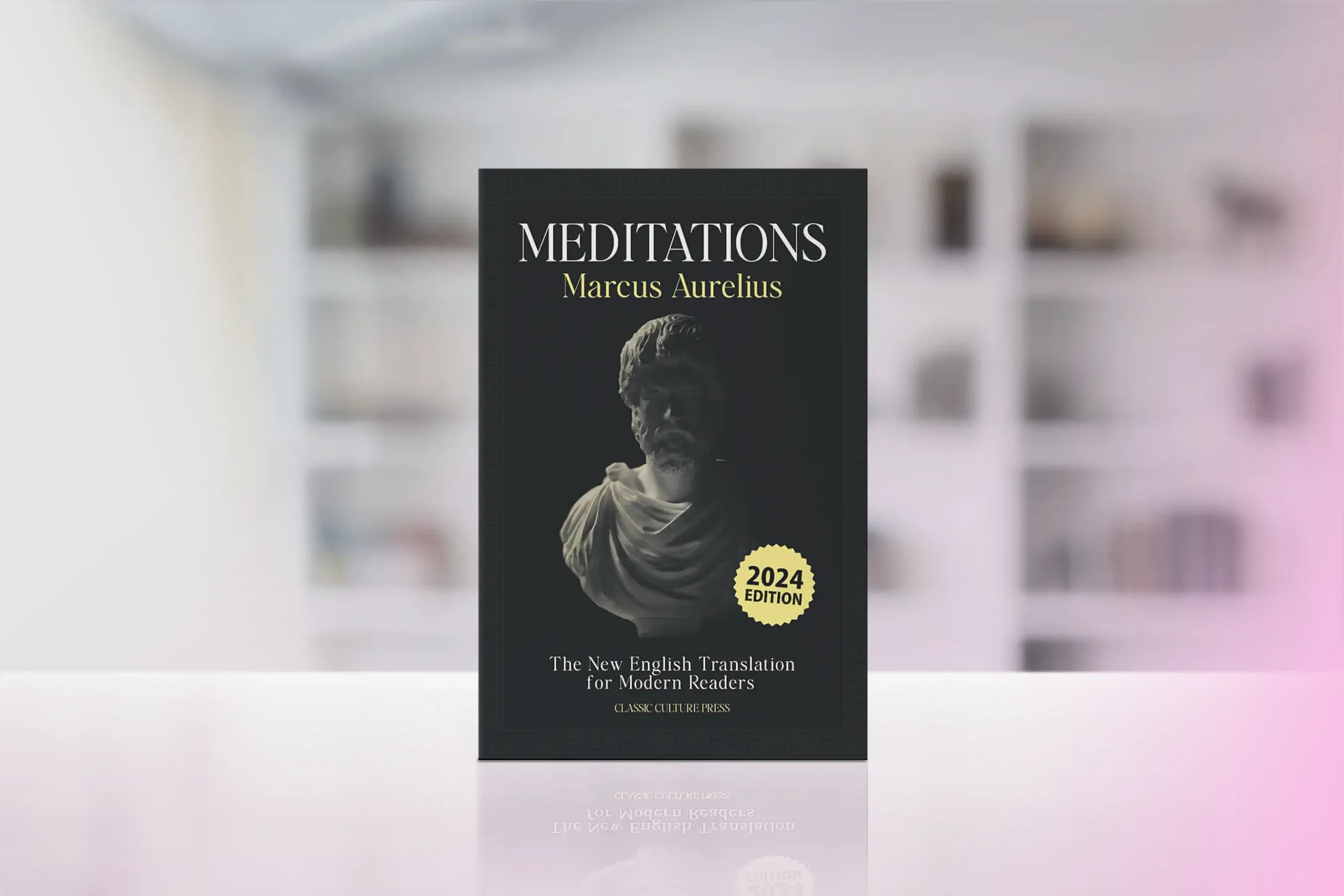In an era dominated by constant connectivity and digital noise, Cal Newport’s “Digital Minimalism” emerges as a beacon of intentional living.
Published in 2019, this thoughtful book offers a philosophy for technology use that cuts through the digital clutter and helps readers reclaim their time and attention.
Newport, a computer science and productivity expert, presents a compelling case for a more deliberate approach to digital tools, empowering readers to cultivate a more focused, fulfilling life in our increasingly connected world.
Core Concepts
Newport introduces several key concepts that form the foundation of digital minimalism:
- Digital Minimalism: A philosophy of technology use based on the idea that less can be more.
- Digital Declutter: A 30-day process to reset your relationship with technology.
- High-Quality Leisure: Engaging in meaningful offline activities to replace mindless scrolling.
- Attention Resistance: Protecting your time and mental space from the attention economy.
- Social Media Optimization: Using social media more intentionally and effectively.
- Slow Media: Consuming information more deliberately and less reactively.
These concepts aim to transform your relationship with technology, helping you harness its benefits while minimizing its negative impacts. By embracing digital minimalism, you’ll be better equipped to focus on what truly matters and live a more intentional, satisfying life.
Chapter-by-Chapter Review
Part 1: Foundations
Chapter 1: A Lopsided Arms Race
Newport argues we’re trapped in an unintended battle against technology companies for our attention. Billion-dollar corporations invest heavily in making products irresistible using behavioral engineering. Smartphones and social media deliberately exploit psychological triggers like variable rewards and social approval to create addictive experiences that maximize engagement and profit.
Chapter 2: Digital Minimalism
Newport introduces digital minimalism as selecting technologies that strongly support your values while ignoring everything else. He outlines three principles: clutter is costly, optimization is important, and intentionality is satisfying. Minor tweaks aren’t sufficient—we need to completely rebuild our relationship with technology starting from our deepest values.
Chapter 3: The Digital Declutter
Newport presents a practical 30-day process for implementing digital minimalism. Take a month-long break from optional technologies, actively explore offline activities, then thoughtfully reintroduce technologies with strict criteria. Each returning technology must serve something you deeply value, be the best available tool, and have clearly defined usage rules.
Part 2: Practices
Chapter 4: Spend Time Alone
Newport introduces “solitude deprivation”—spending virtually no time alone with your thoughts. Constant smartphone connectivity eliminates natural moments of solitude, leading to increased anxiety and decreased self-reflection. The chapter offers practical strategies including phone-free walks, regular long walks, and writing letters to yourself for processing thoughts without digital interference.
Chapter 5: Don’t Click “Like”
This chapter addresses the “social media paradox”—how platforms make us feel simultaneously connected and lonely. Newport argues digital communication creates false equivalence between connection and conversation. He introduces “conversation-centric communication” that prioritizes rich interactions involving analog cues like tone and facial expressions over low-quality digital interactions like likes and comments.
Chapter 6: Reclaim Leisure
Newport addresses what to do with time freed from digital distractions. He introduces the “Bennett Principle,” emphasizing demanding, skilled activities over passive consumption. High-quality leisure involves prioritizing demanding activities, using physical skills to create valuable things, and seeking structured social interactions. Without meaningful activities, people inevitably return to devices.
Chapter 7: Join the Attention Resistance
Newport calls readers to join the “attention resistance”—refusing to surrender mental faculties to companies that commodify human attention. Tech giants built business models around capturing focus to sell to advertisers. The chapter provides strategies including embracing “slow media,” using social platforms professionally and creating attention-protecting routines.
Key Strengths
- Offers a refreshing, counterintuitive approach to technology use
- Provides practical strategies for implementing digital minimalism
- Encourages readers to reflect on their values and priorities
- Balances critique of technology with acknowledgment of its benefits
- Backed by research and real-life examples
Potential Drawbacks
- Some readers may find the approach too extreme or challenging to implement
- Limited discussion of how to balance digital minimalism with work requirements
- May not fully address the needs of those whose work revolves around social media
Who This Book Is For
This book is an invaluable resource for a wide range of readers, including:
- Anyone feeling overwhelmed by constant connectivity and digital noise
- Professionals looking to improve their focus and productivity
- Parents concerned about their children’s technology use
- Individuals seeking to cultivate more meaningful offline experiences
Final Review
“Digital Minimalism” challenges our assumptions about technology use and offers a practical path to a more intentional digital life. Newport’s clear prose and logical arguments make a compelling case for reassessing how we engage with digital tools, helping readers reclaim time, reduce anxiety, and focus on meaningful pursuits.
The book excels in its actionable approach. Beyond critiquing digital overuse, Newport provides concrete strategies for breaking social media addiction, minimizing distractions, and cultivating a balanced, purposeful relationship with technology.
Rating: 4.5/5
An essential guide for anyone seeking to thrive in the digital age by cultivating a more intentional and fulfilling relationship with technology.
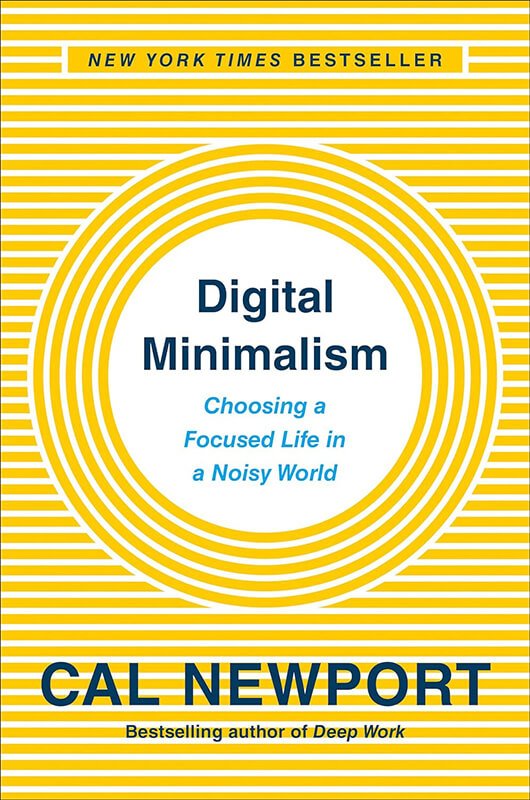
Alternative Books
Want to explore similar themes, consider these alternative books:
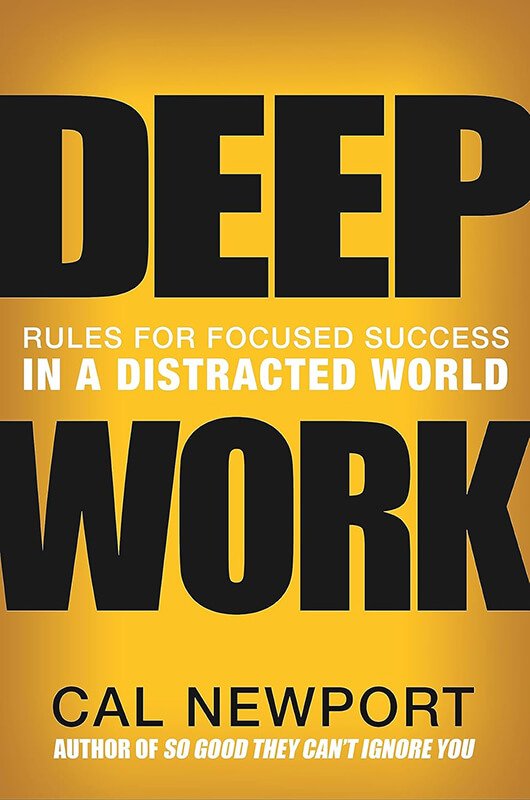
“Deep Work” by Cal Newport
Another work by Newport that focuses on cultivating intense focus in a distracted world.
Rating: 4.5/5

“How to Do Nothing” by Jenny Odell
Offers a different perspective on resisting the attention economy and finding value in activities that may seem unproductive.
Rating: 4.2/5
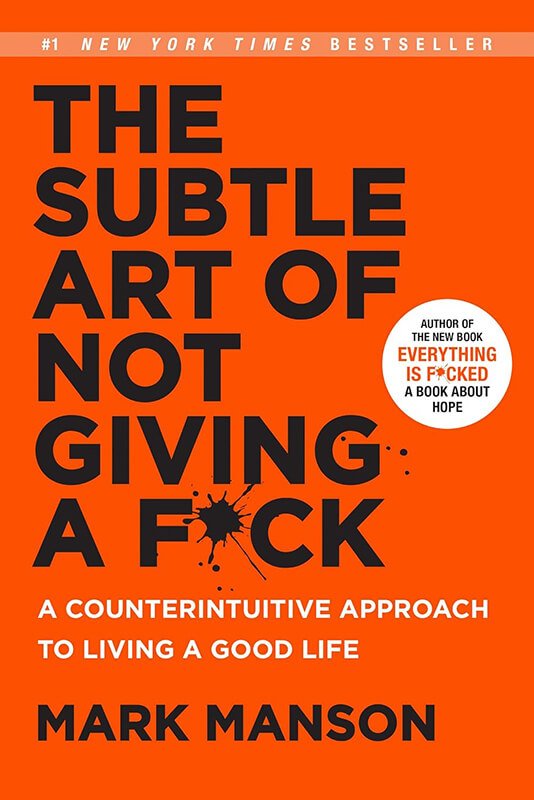
“The Subtle Art of Not Giving a F*ck” by Mark Manson
While not directly about technology use, this book provides insights on prioritizing what truly matters in life.
Rating: 4.4/5

